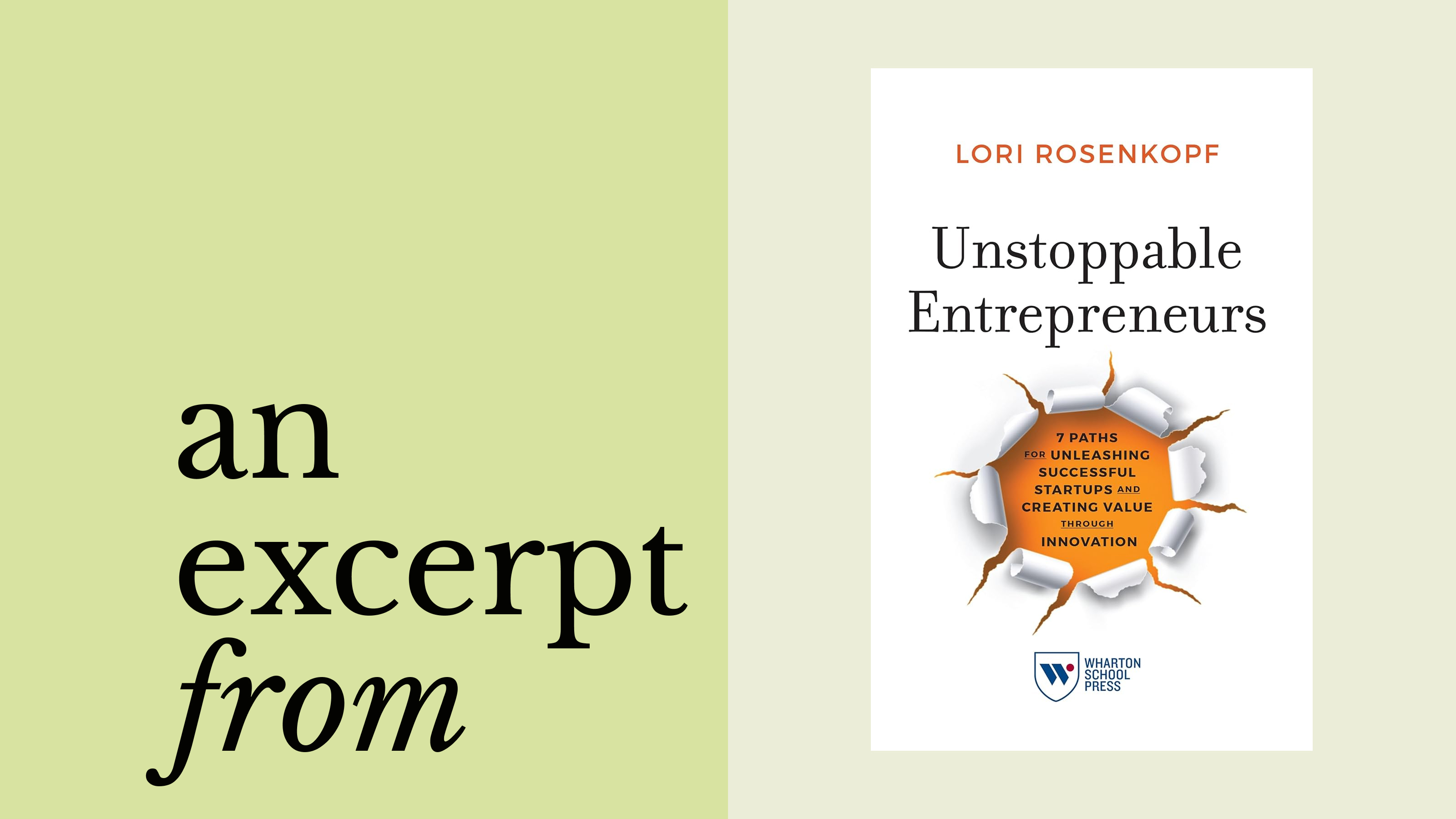9 elements of a strong social venture pitch

- Lumina Foundation is partnering with Big Think to unearth the next large-scale, rapid innovation in post-high school education.
- Got an idea like that? Enter the Lumina Prize!
- To craft a good social venture pitch, pay attention to these 9 critical areas.
By Richard Tafel
Director, Social Capital Advisors, Marcum LLP.
Having a clear and concise social venture pitch can be the difference between success and failure.
In my time advising social venture companies, I’ve met some impressive entrepreneurs who simply lacked the ability to raise funds, and I’ve also met a few with mediocre solutions who had the advantage of access to a great sales team. The great sales team always wins. Mastering a good pitch to investors is critical to success.
There are ten critical areas for you to include in your pitch. For teaching purposes, I’ve imagined an education social venture to use as an example to make the point crystal clear. These steps will work well for both for-profit and nonprofit social ventures.
Step 1: Headline
Tell the listener in a succinct way what you are talking about. This is the most overlooked element of most pitches. Social entrepreneurs usually just jump right in to their model, leading the investor to have to guess what they’re listening to. A headline statement will frame what you are about to say, allowing the listener to know where this is going.
A good headline gives your investor reasons they should care. A good headline gets investors’ attention, for example:
“Thanks for your interest. I want to share our adult education solution that provides adults with simple navigation tools in order to move through the complicated American education system.”
Step 2: Introduction
An introduction briefly tells them who you are and the mission of your venture, for example:
“Hi, I’m Sally Jones and I’m the founder of Education Solutions. We match adults without a tradition high school degree to jobs that transform their lives for the better.”
Step 3: The Problem
Immediately state the problem you’re solving and the opportunity it presents. State it concisely and include numbers if you can. For example:
“Last year, 7 million jobs went unfilled in America. That very same year, 95 million workers reported that they couldn’t find meaningful work. This problem has been growing over the past ten years, leaving all sides frustrated – unemployed workers feel depressed facing a loss of dignity which cost taxpayers $2.7 trillion. This gap between those seeking jobs and needing jobs needs to be bridged.”
Step 4: System Solution
Impact investors want to fund programs that solve problems and don’t simply put a Band-Aid on the issue. Present your solution in terms of systems change, not just symptom treatment. Unlike a VC pitch, you’ll have to show how your venture can provide both financial return and meaningful social impact. For example:
“Our model provides skill matching, coaching and cutting edge credentialing to our adult clients, many of whom are homeless. We bring adult workers out of unemployment into a job that will enable them with dignity and respect for a lifetime. Last year, we saved our city $1M by adding new jobs, helping new workers add to the local economy rather than depending on charity.”
Step 5: Collaboration
Unlike a traditional VC pitch, where you must identify and beat the competition, a social venture must show command of the field of potential collaborators, such as government, nonprofits, other social ventures, while also demonstrating a knowledge of the ecosystem’s strengths and weaknesses. For example:
“While programs to provide adult learning, such as GRE programs, have existed for years, few meet the needs of the gig-tech economy. Our model builds upon existing education networks through smart phone technology and matches workers with jobs that need their skills, allowing for matches to stick. Also, we’re convinced our offering of a wrap-around service is what’s needed for sustainable change in adult education.”
Step 6: Sustainable
Before an impact investor gives to you today, they’ll consider whether you’ll be back in six months asking for more. They are listening to hear if your model generates a sustainable funding stream. How does your effort address the big challenges and find a way to access recurring revenue or donations?
Address this head on. For example,
“After our initial investment in this model, we will deploy our corporate partnerships where employers pay into our program to gain access to the newly credentialed workers. Our estimate shows that with only 20 corporate partners, we can actually run a profit by the end of just 18 months.”
Step 7: Why you?
Impact investors state bluntly that they are investing in the person, not the product. (If your bio is critical to this pitch, consider moving this step right up to Step 3.) You need to show yourself as an expert who is a tenacious leader with a pragmatic vision.
Leadership matters, but no leader stands alone. Tell them who you have on the team and how those players enhance your skills, for example:
“Today, two of our founders actually hold college degrees in addition to certificates and two of us are credentialed in the critical technology for our tech model to work. All of us have created personal income streams in the triple digits. We are living examples that adults can navigate the new educational systems and succeed. We can lead the way for the rest of the nation.”
Step 8: Measure return on investment and impact
Social impact investors will want to know what financial return they can expect, along with compelling evidence that you’ll be able to provide the return. They will also want to measure how you’ve made progress toward social impact. Provide as much quantitative support as you can for your vision. For example:
“With your investment of $250,000 we can help 2,500 adult learners get their credentials in just 26 months. In two years, this will generate a profit as we become a vendor to the state and federal government. The state has agreed to engage with us, creating a social impact bond. We can also increase our corporate partnership program. If we hit our numbers as planned, we could see a 7% return on the investment.”
Step 9: The ask
“The ask” is often left out because the speaker thinks that it is clear, or it makes them uncomfortable. Be very explicit. Tell the investor what you need and how you’ll spend the money. For example:
“I’m here today to ask you to invest $250,000 in our program to join two other investors already committed at this level. With the three of you, we will have funds necessary to achieve our goal of 2,500 new credentialed adults in our state.”
Now stop talking and answer questions! A great pitch is just an opportunity to get your foot in the door. Everything you say must be true and it will be verified, so keep it visionary and keep it honest.
Remember, if you don’t ask the answer is always “no” –– so what have you got to lose?
The mock social impact pitch
Let’s hear how it sounds together:
“Thanks for your interest. I want to share our adult education solution that provides adults simple navigation tools to move through the complicated education system in America.”
“Hi, I’m Sally Jones and I’m the founder of Education Solutions. We match adults without a tradition high school degree to jobs that transform their lives for the better.”
“Last year, 7 million jobs went unfilled in America. That very same year, 95 million workers reported they couldn’t find meaningful work. This problem has been growing over the past ten years with all sides frustrated – unemployed workers feel depressed facing a loss of dignity which cost taxpayers $2.7 trillion. This gap between those seeking jobs and needing jobs needs to be bridged.”
“Our model provides skill matching, coaching and cutting edge credentialing to our adult clients many of whom are homeless. We bring adult workers out of unemployment into a job that they will be able to find dignity and respect for a lifetime. Last year, we saved our city $1M by adding new jobs, helping new workers add to the local economy rather than depending on charity.”
“While programs to provide adult learning, such as GRE programs, have existed for years, few are meeting the need in the gig-tech economy. Our model builds on education network that now exist and build on them by using smart phone technology to match up workers to both the jobs and credentials necessary for the match to stick. Also, we’re convinced our offering of wrap-around services is what’s needed for sustainable change in adult education.”
“After our initial investment in this model, we will deploy our corporate partnerships where employers pay into our program to gain access to the newly credentialed workers. Our estimate shows that with only 20 corporate partners, we can actually run a profit by the end of just 18 months.”
“Today, two of our founders actually hold college degrees in addition to certificates and two of us are credentialed in the critical technology for our tech model to work. All of us have created personal income streams in the triple digits. We are living examples that prove that adults can navigate the new educational systems and succeed. We can lead the way for the rest of the nation.”
“With your investment of $250,000 we can support 2,500 adult learners in getting their credential in just 26 months. In two years, this will generate a profit as we become a vendor to the state and federal government. The state has agreed to engage with us, creating a social impact bond. We can also increase our corporate partnership program. If we hit our numbers as planned, we could see a 7% return on the investment.”
“I’m here today to ask you to invest $250,000 in our program to join two other investors already committed at this level. With the three of you, we will have funds necessary to achieve our goal of 2,500 new credentialed adults in our state.”





